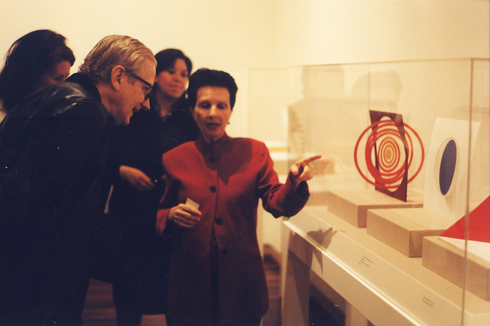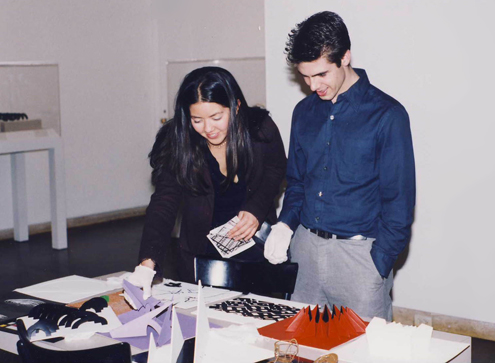Forma:Brazil, Geraldo de Barros and Lygia Pape
On view:
through
Forma:Brazil, Geraldo de Barros and Lygia Pape
This exhibition, curated by Gabriel Pérez-Barreiro, presented the work of two pioneering abstract artists from the early years of concrete and neo-concrete art, a period in the 1940s and 1950s, in which Brazilian artists developed ideas from the European avant-garde in an innovative and unique way. The fotoformas of São Paulo Concrete artist Geraldo de Barros (1923-1998) were an early manifestation of a new desire for modernity, expressed through a series of photographs and photograms in which fragments of the city of São Paulo were rearranged into abstract compositions. Created between 1947 and 1950, the fotoformas have reflected the excitement of São Paulo in the middle of the twentieth century.

The abundant critical and art historical attention paid to Lygia Pape’s Rio de Janeiro contemporaries and co-founders of the neo-concrete movement, Hélio Oiticica and Lygia Clark, have overshadowed the vital contributions of Lygia Pape. This exhibition presented Pape’s important early neo-concrete works such as a video of Balé neoconcreto n°1 and Balé neoconcreto n°2 (Neo-Concrete Ballet No. 1 and Neo-Concrete Ballet No. 2), a choreography for pure geometrical forms set to experimental music, and the 1959–60 books/sculptures The Book of Creation and The Book of Architecture, which could be manipulated by the viewer. Visitors were invited to handle a replica of The Book of Architecture. The exhibition also included her seminal woodblock prints called Tecelares (Weavings).

Exhibition catalogues available
Forma:Brazil was made possible by Banco Itaú, S.A., BankBoston: a FleetBoston Financial Company, and Marcos de Moraes.
Images: visitors and the artis Lygia Pape at Geraldo Barros and Lygia Pape. Americas Society. 2001







